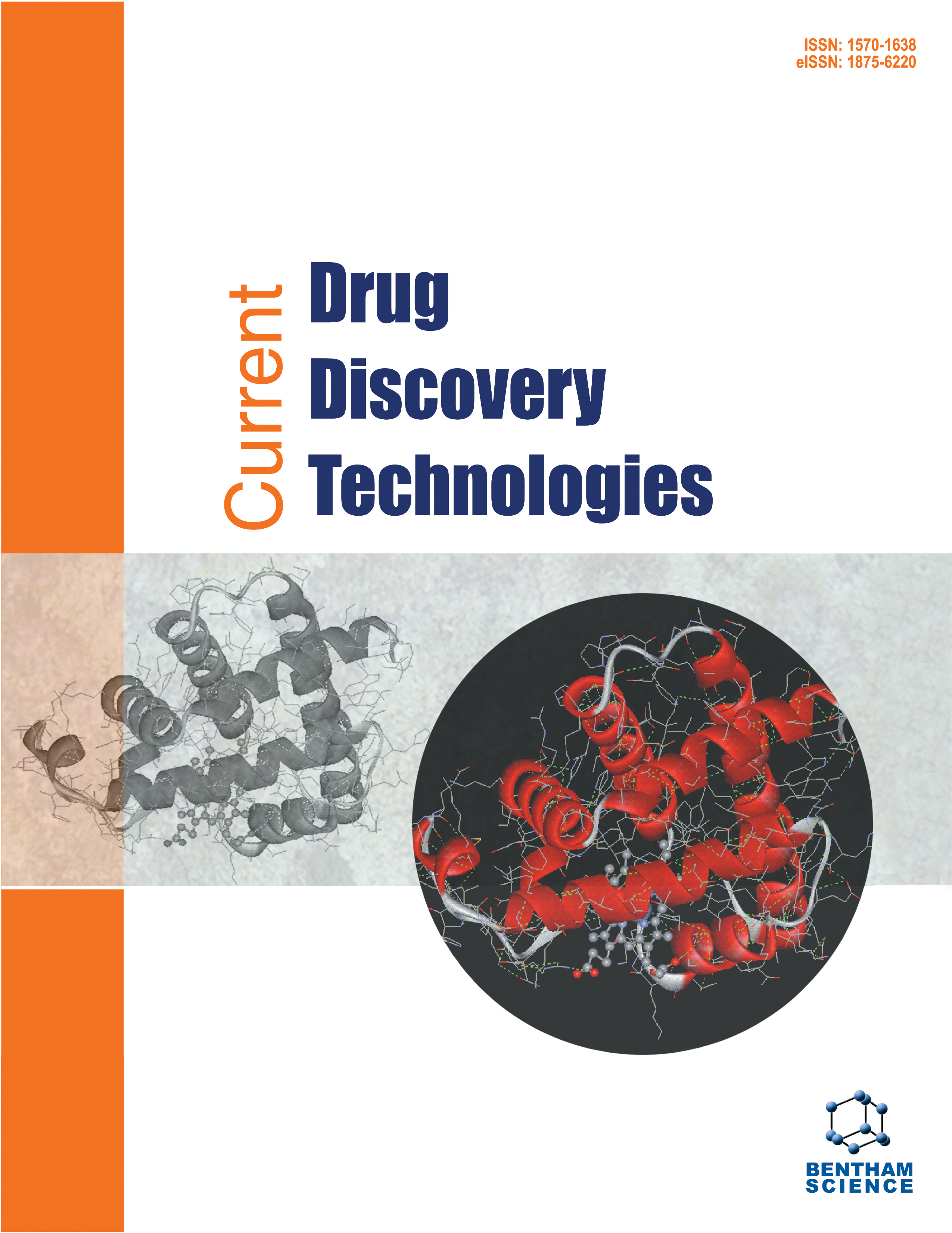- Home
- A-Z Publications
- Current Drug Discovery Technologies
- Previous Issues
- Volume 11, Issue 2, 2014
Current Drug Discovery Technologies - Volume 11, Issue 2, 2014
Volume 11, Issue 2, 2014
-
-
Nicotinic Acid and its Derivatives: Synthetic Routes, Crystal Forms and Polymorphs
More LessAuthors: Pan-Pan Zhou, Xiao-Bo Sun and Wen-Yuan QiuNicotinic acid is a well-known pharmaceutical in the vitamin B group that has attracted great interest in the past decades due to its significant importance in the treatment of the human diseases like pellagra. Also, nicotinic acid derivatives have been devoted to much attention due to their different pharmaceutical effects in the treatment of diseases. In view of this, the developments of nicotinic acid and its derivatives includ Read More
-
-
-
The Importance of Epitope Binning for Biological Drug Discovery
More LessThe pharmaceutical industry is experiencing comeback sales growth due in large part to the industry’s R&D efforts that center on biologics drug development. To facilitate that effort, tools are being developed for more effective biologic drug development. At the forefront of this effort is epitope characterization, in particular epitope binning, primarily due to the role an epitope plays in drug function. Here we detail the fina Read More
-
-
-
Potent Phosphatidylinositol 3-Kinase Inhibitors and Their Biology
More LessAuthors: Mukesh Chandra Joshi, Krishan Kumar and Vikrant KumarThe Phosphoinositide 3-kinase (PI3k) is an important regulator of intracellular signalling pathways, like cell proliferation, migration, survival, and angiogenesis upon activation by growth factor or receptors. The PI3k’s pathway is frequently up-regulated in human cancers, thus inhibition of PI3k’s is a promising approach for cancer therapy. Many potent PI3k’s inhibitors have been reported so far and few of them are in clinic Read More
-
-
-
Selective Cyclooxygenase Inhibitors: Current Status
More LessFor ages aspirin has established its value as an analgesic, anti-inflammatory drug, but in 1938, it was found to be a causative factor of gastric inflammation (ulcer). Later discovered non-steroidal anti-inflammatory drugs (NSAIDs) were found effective as aspirin but failed to overcome the goal of safer aspirin. As the method of prostaglandin inhibition through COX is a common mechanism to both the wanted and unwanted Read More
-
-
-
Design and Synthesis of New Potent Inhibitors of Farnesyl Pyrophosphate Synthase
More LessPredictive QSAR models for the inhibition activities of nitrogen-containing bisphosphonates (N-BPs) against farnesyl pyrophosphate synthase (FPPS) from Leishmania major (LeFPPS) were developed using a data set of 97 compounds. The QSAR models were developed through the use of Artificial Neural Networks and Random Forest learning procedures. The predictive ability of the models was tested by means of leave-one-out cro Read More
-
-
-
Bypass Mechanisms of Resistance to Tyrosine Kinase Inhibition in Chronic Myelogenous Leukaemia
More LessAuthors: Gabriella Marfe and Carla Di StefanoChronic myeloid leukaemia (CML) is a disease induced by the BCR-ABL oncogene. Tyrosine kinase inhibitors (TKIs) were introduced in the late 1990s and have revolutionized the management of CML. The majority of such patients can now expect to live a normal life providing they continue to comply with TKI treatment. However, in a significant proportion of cases, TKI resistance develops over time, requiring a change of thera Read More
-
-
-
Cyclodextrin Inclusion Complex of Racecadotril: Effect of Drug-β- Cyclodextrin Ratio and the Method of Complexation
More LessAuthors: Mona Semalty, Mitali Panchpuri, Devendra Singh and Ajay SemaltyRacecadotril is an antisecretory and antidiarrheal agent against watery diarrhoea in children. Racecadotril is a class II drug (as per Biopharmaceutical Classification System) with poor aqueous solubility and dissolution rate limited absorption. β-cyclodextrin complexation of solubility or dissolution rate limited drugs provides an amphiphilic complex with improved solubility and dissolution profile. Thus Racecad Read More
-
-
-
In-Vitro Assessment and Pharmacodynamics of Nimesulide Incorporated Aloe vera Transemulgel
More LessThe aim of the investigation was to prepare nimesulide emulsion for incorporation in Aloe vera gel base to formulate ‘nimesulide – Aloe vera transemulgel’ (NAE) and to carryout in-vitro assessment and in-vivo anti-inflammatory studies of the product. Although the use of nimesulide is banned for oral administration, due to its potential for inducing hepatotoxicity and thrombocytopenia, the use of nimesulide for topical d Read More
-
Volumes & issues
-
Volume 22 (2025)
-
Volume 21 (2024)
-
Volume 20 (2023)
-
Volume 19 (2022)
-
Volume 18 (2021)
-
Volume 17 (2020)
-
Volume 16 (2019)
-
Volume 15 (2018)
-
Volume 14 (2017)
-
Volume 13 (2016)
-
Volume 12 (2015)
-
Volume 11 (2014)
-
Volume 10 (2013)
-
Volume 9 (2012)
-
Volume 8 (2011)
-
Volume 7 (2010)
-
Volume 6 (2009)
-
Volume 5 (2008)
-
Volume 4 (2007)
-
Volume 3 (2006)
-
Volume 2 (2005)
-
Volume 1 (2004)
Most Read This Month
Article
content/journals/cddt
Journal
10
5
false
en


